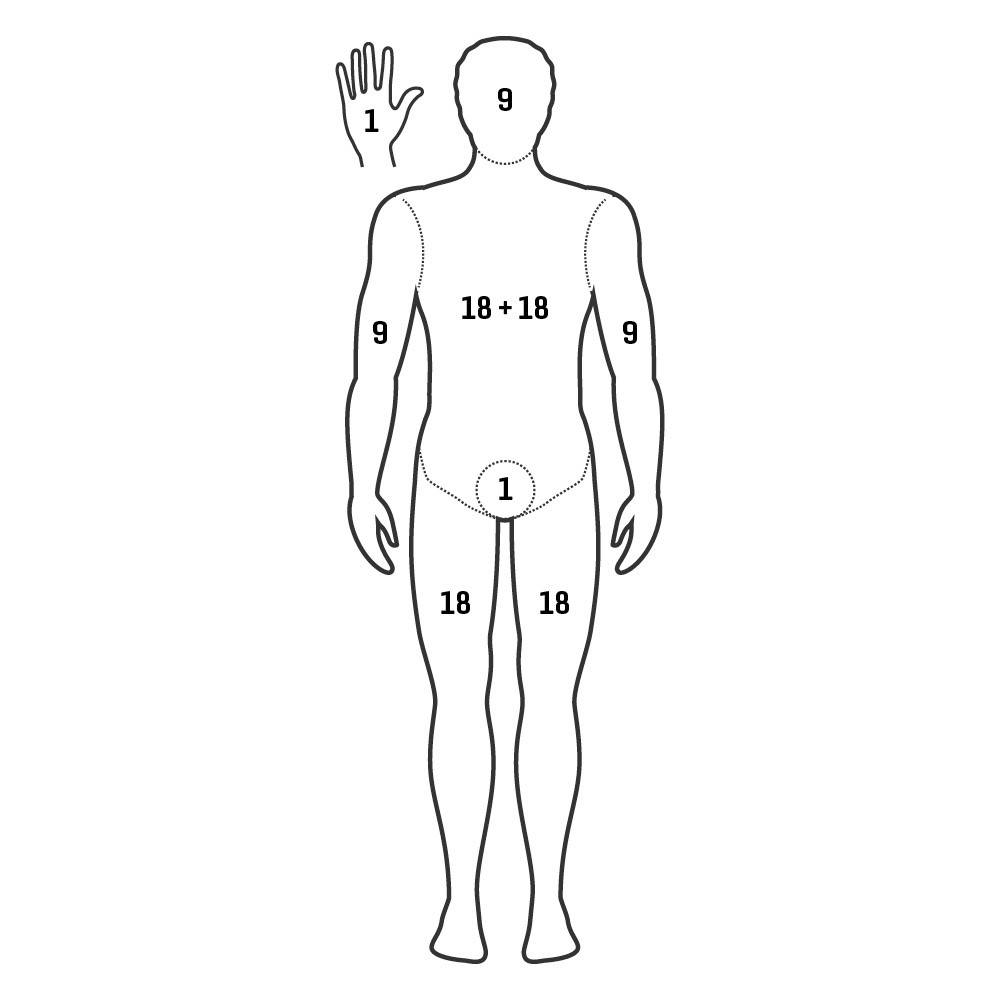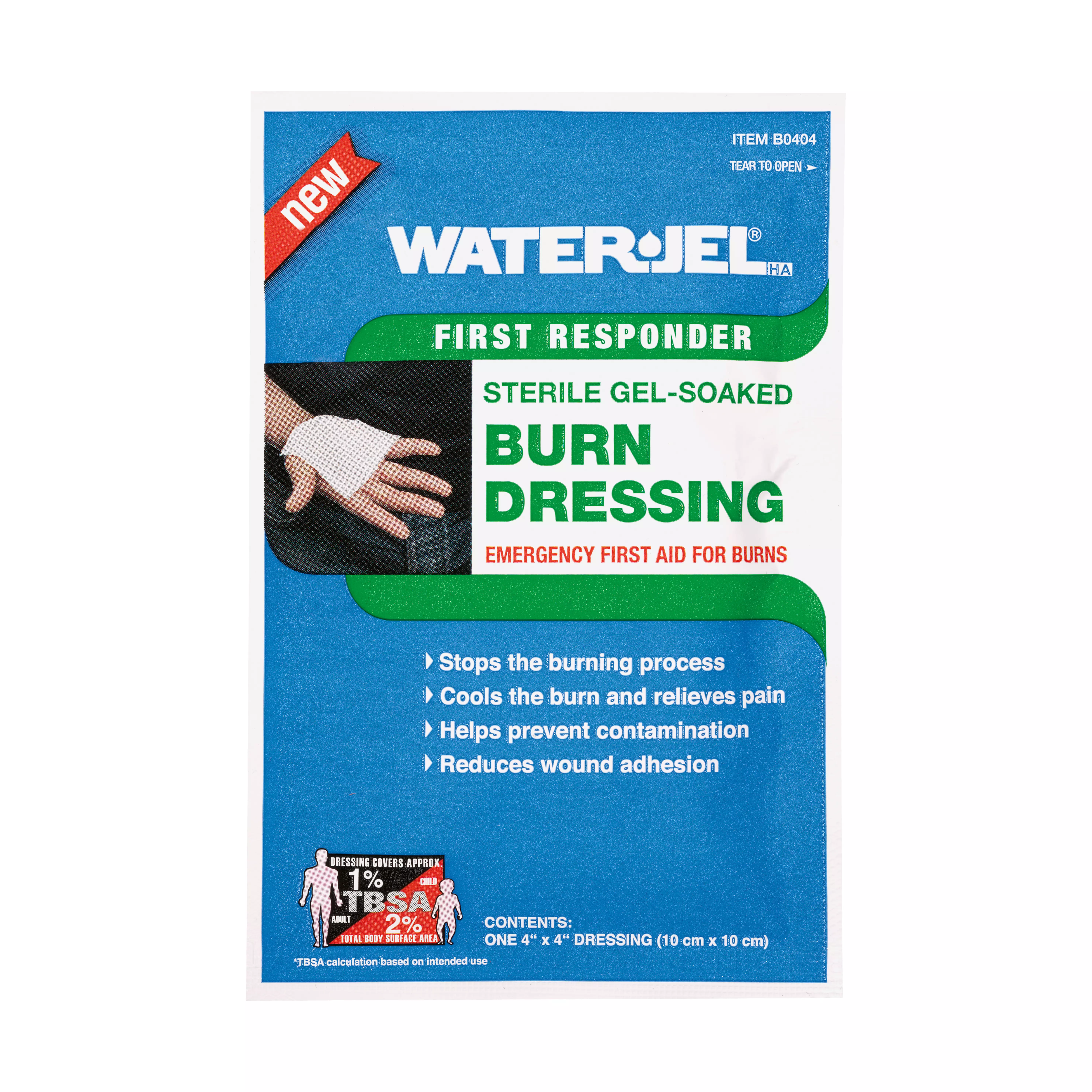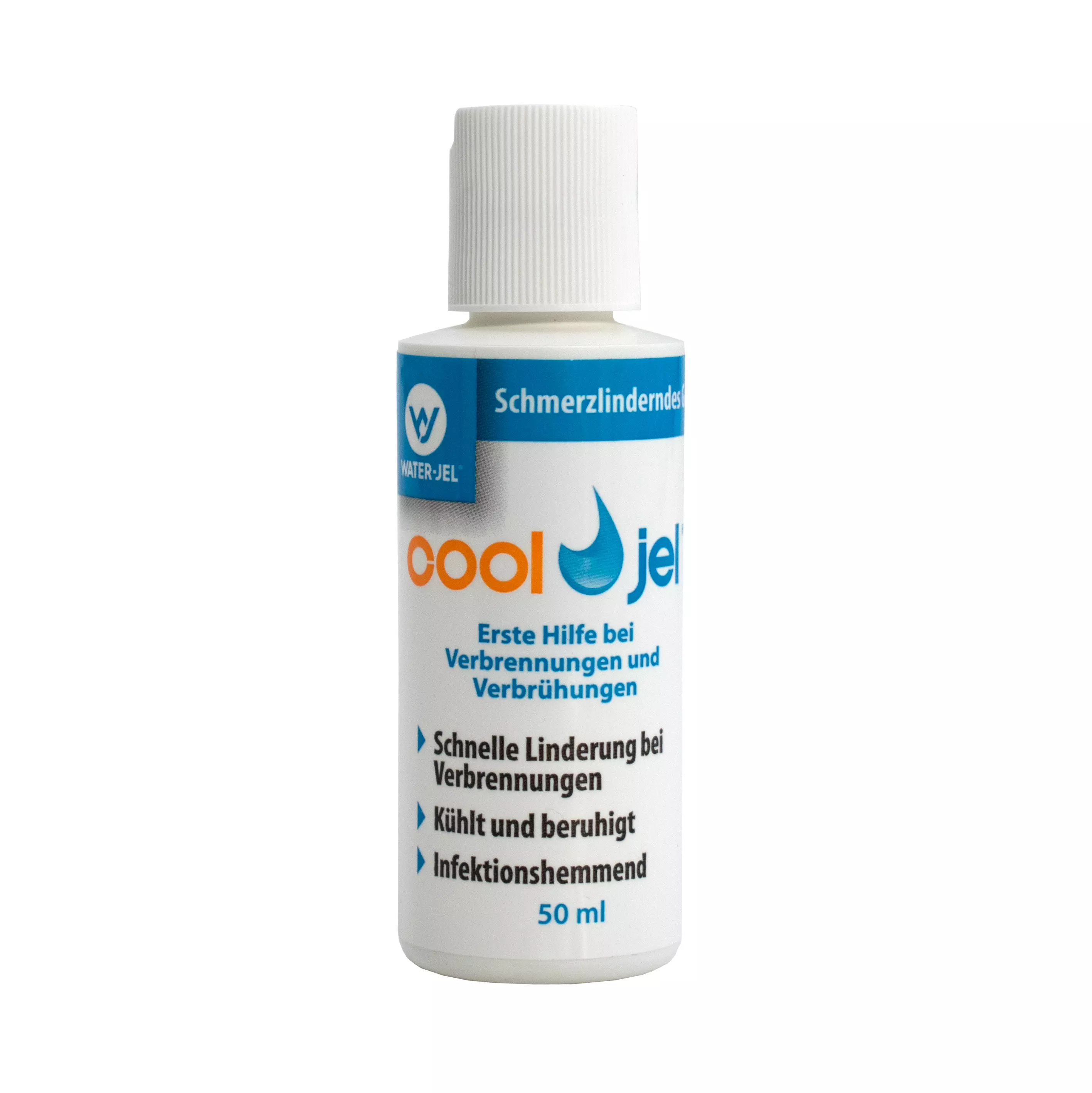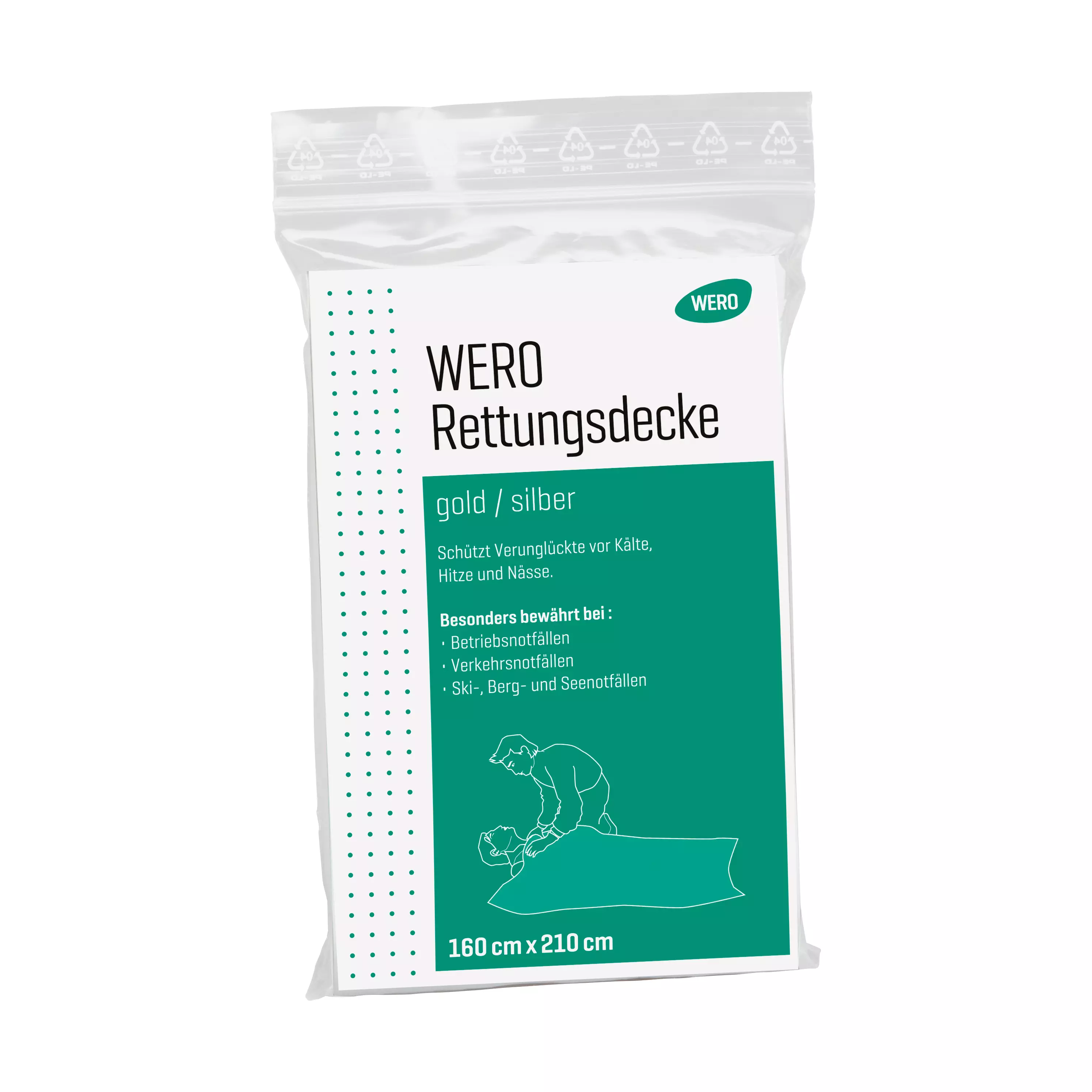Treating burns correctly
Compresses, complete sets and fire blankets
Available, delivery time: 1-3 days
Content: 0.05 l (€162.60* / 1 l)
Available, delivery time: 1-3 days
Available, delivery time: 1-3 days
What are the most common causes of burns?
The causes of burns can be divided into six categories:
- dry-thermal: flames, radiant heat, open fire (explosion)
- wet-thermal: scalding, hot liquids, vapour
- liquid chemicals: acids, alkalis, solvents, etc.
- dry chemicals: powder (e.g. cement, lime, etc.)
- mechanical: friction
- Radiation: sunburn, radioactivity, ionisation
How does the body react to burns?
When the human body is exposed to intense heat, this heat also penetrates the body tissue. The human body consists of 70 - 90 % water, which has the ability to circulate heat. The extreme heat is trapped in the tissue.
One of the most important functions of the human skin is to prevent heat loss. The body will try to get rid of the heat the same way it entered - back through the skin and in parallel via the bloodstream. The heat that the body does not release immediately begins to destroy the surrounding tissue.
Rules of Nines - Rule of Nines for burns
The Rule of Nines is a clinical rule of thumb for the orientating assessment of the severity of burns.
For an initial assessment of the measurement of the body surface area, the following classification helps:
- Head: 9 %
- Arms: 9 % each
- Trunk front and back: 18 % each
- Legs: 18 % each
- Genital region: 1 %

The 4 basic measures for burns
- Eliminate the cause of the burn (if still necessary)
- Extinguish burning persons (extinguishers, WATER-JEL® blanket)
- Move the affected person away from heat sources
- Cool the burn (pain relief)
- Immediate, localised cooling of the affected areas of skin provides immediate pain relief (e.g. with WATER-JEL® HA First Responder compresses)
- Cooling prevents the heat already stored in the tissue from causing further damage
- Avoid cooling large areas beyond the burn surface
- By using WATER-JEL® products, you avoid cooling large areas. (risk of hypothermia)
- Clean wound care
- To prevent further contamination, cover the wound with sterile wound dressings
- Possible adhesion of the wound dressing to the wound makes further clinical treatment difficult
Note: WATER-JEL® HA First Responder products do not adhere to the burn wound - Preservation of the victim's body heat
- Large cooling of the burn with water accelerates this process
- Ensure that warmth is maintained(woollen blanket, rescue blanket)
Frequently asked questions about burns
What are the different degrees of burns?
A distinction is made between first, second and third degree burn s. First-degree burns usually show reddened skin or swelling. Second-degree burns are characterised by skin damage that affects the dermis. In addition to the first two layers of skin, third-degree burns also damage underlying layers of skin.
How are burns treated correctly?
The basic measures for treating burns are 1. Eliminating the cause of the burn 2. Cooling the burn (direct contact of the skin with ice should be avoided) 3. Clean wound care 4. Maintaining the victim's body heat.
Can a burn be cooled with water?
If the burn is cooled with cold water, there is a risk that the affected area or even the injured person will cool down, especially in the case of extensive burns. The core temperature of the affected person decreases as a result of the cooling. The body reacts with muscle tremors to produce heat.
What is the "Rule of Nine"?
The Rule of Nine is a clinical rule of thumb for assessing the severity of burns. For example, a burn to the hand corresponds to a burn of 1% of the total skin area. The burn of an arm corresponds to approx. 9 hands, i.e. 9 %.



